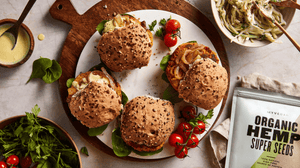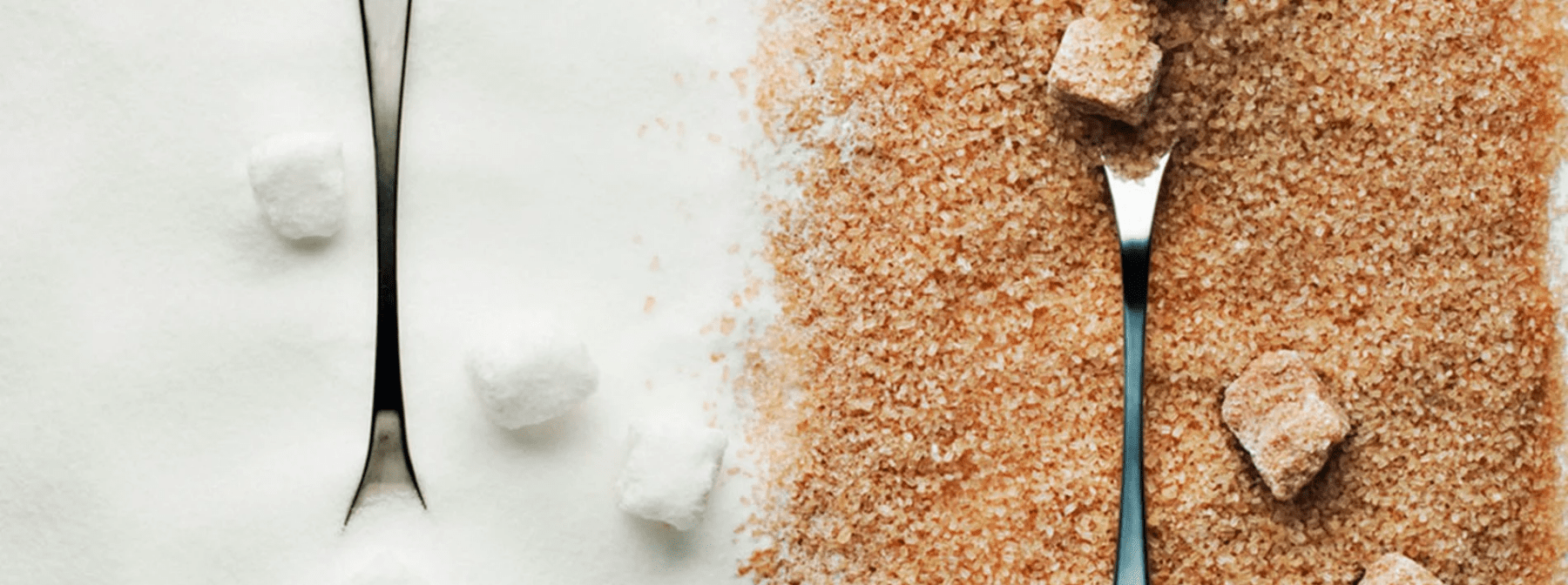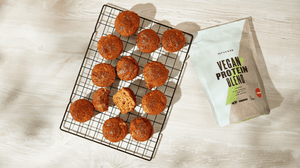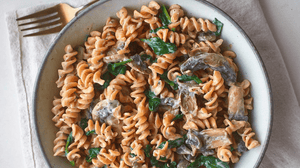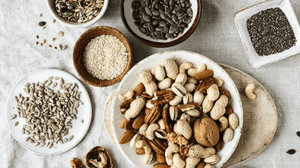
Guide To Your Daily Sugar Intake
Sugar has become a rather complicated topic over the years and has overtaken fat as the nutrient to avoid. Let's explore the reasons why sugar has gotten a bad rep, the different types of sugar, and the effects of sugar on the body.
- What Is Sugar?
- What Are The Main Types Of Sugars?
- How Does Sugar Affect Our Body?
- Our Daily Sugar Intake
- Fruits High In Sugar
- How To Control Your Sugar Intake
- FAQs
What Is Sugar?
Sugar is a water-soluble carbohydrate, naturally sweet in taste. ‘Simple’ sugars, also known as monosaccharides, don’t require breakdown in the gut, so can be used as a quick energy source. The three monosaccharides that occur naturally are glucose, fructose and galactose.
If two of these sugars are found together, these are known as a disaccharide – this is usually glucose in combination with either fructose or galactose. A combination of more than two sugars is a polysaccharide and is a more complex type of carbohydrate.
The amount of sugar contained in a food can be measured using the glycaemic index; high GI foods can cause a rapid increase in sugar levels within the bloodstream, whilst low GI foods tend to lead to a more gradual rise. It is important to note that high GI does not equal unhealthy, as some high GI foods may contain additional nutrients or benefits.

What Are The Main Types Of Sugars?
Glucose is found pretty much everywhere and anywhere! Any foods that contain carbohydrates are sources of glucose. This includes healthy carbohydrates such as wholegrains, beans and legumes, vegetables, and plant-based milks.
Fructose is mostly found in fresh fruits and has a sweeter taste compared to glucose. Galactose is found in dairy products, usually as combine with glucose to form the disaccharide lactose. A combination of glucose and fructose make up sucrose, whilst glucose paired with glucose makes up the disaccharide maltose.
It’s important to remember that not all sugar is created equal! Fruit sugars, such as fructose, can be easily used as an energy source. This usually means these are high glycaemic index foods, causing a subsequent rise in glucose levels within the blood.
However, fructose is usually paired with fibre in whole foods such as apples, pears and bananas. Fibre is important for reducing the GI content of food and creates a slower-release form of energy.
Foods that contain polysaccharides are usually high GI foods, but without the added benefit of fibre. These tend to be disaccharide or polysaccharide containing foods. Examples include maple syrup, chocolate, and starchy foods (bread, pasta, white rice). As mentioned already, these foods may contain other benefits – e.g. dark chocolate contains flavonoids, a type of antioxidant that can be used to fight inflammation in the body.
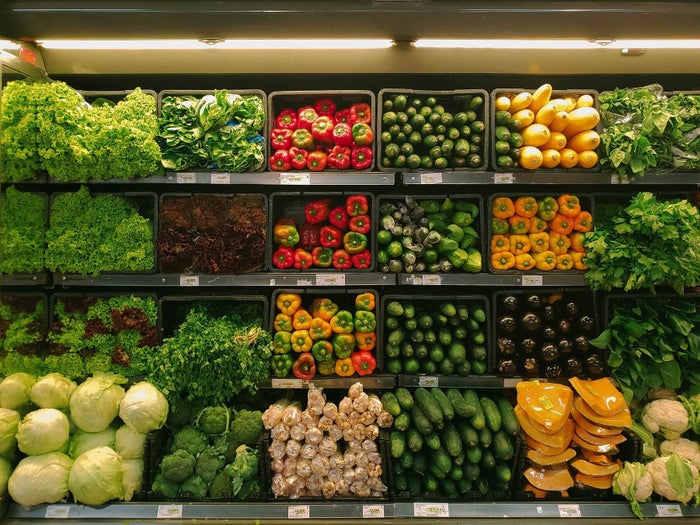
How Does Sugar Affect Our Body?
Complex sugars including polysaccharides and disaccharides require a greater level of processing in the body so they can be used as an energy source. Whilst this may seem like a good thing, these energy converting mechanisms increase the number of sugar molecules available for storage.
Sugar molecules can be stored in muscles as reserve energy storage. Alternatively, sugar can be converted to fatty acids, which become stored within fat cells. In comparison, simple monosaccharide sugars don’t require this processing, so are less likely to be used as storage.
High intakes of complex sugars have been linked to negative gut health; diets high in sugar and low in fibre can disrupt the gut microbiome, leading to increased inflammation within the body. This inflammation may manifest as symptoms of low-grade chronic inflammation (non-specific changes including tiredness, change in bowel habit, difficulty concentrating), or as an exacerbation of existing diseases.
It is important to remember that much of the research involving sugar is looking at sugar in fizzy drinks, highly processed foods, and foods that contain a high proportion of both fat and sugar.

Our Daily Sugar Intake
It is recommended that ‘free sugar’ makes up no more than 5% of daily caloric intake; free sugars are those sugars that are added to food and drink. This description also includes honey, syrups (e.g. maple syrup), and sugars found in fruit juices. Sugars found in whole fruits do not fall into the category of free sugars, as they are paired with fibre.
For adults, this means intake is suggested to be 30g or less of free sugars a day – this is about two tablespoons of sugar.
Children aged 7-10 years should 24g or less of free sugars a day, whilst children aged 4-6 should have less than 19g per day. Any children younger than 4 years should avoid sugar-sweetened drinks or food containing added sugars.
Fruits High In Sugar
Unless you have a specific medical condition, eating fruits high in sugar is unlikely to have a significant impact on overall health. However, it can be useful to know which fruits contain the highest sugar content. Fruits that are high in sugar include:Dried fruits
Bananas
Grapes
Mangoes
Cherries
How To Control Your Sugar Intake
Rather than focusing on eliminating all sugars, focus on reducing quantities of free sugars included in the diet. Here are 5 quick and easy to follow tips for reducing sugar:
1. Swap sugary drinks for sugar-free
Whether it’s fizzy drinks or squashes and cordials, there are still plenty of drinks in the supermarket that contain added sugars. Swapping to a sugar free version will help to significantly reduce sugar intake.
2. Swap juices for smoothies
Fruit juices are considered a free sugar, as the fibre content is removed during the juicing process. In contrast, smoothies tend to contain the whole fruit, so does not fall into the category of free sugars. Add superfood extracts or fruity clear protein powder to make your smoothies even more nutritious!
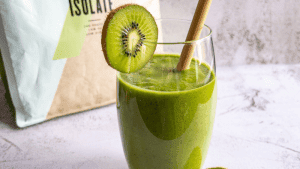
3. Check the label
Sugar can be hidden in a variety of unexpected places – breakfast cereals, plant milks and ready meals are all guilty of hiding added sugars. The traffic light system (red, yellow or green label) can be used to quickly assess the sugar content in foods.
4. Swap to whole food sources of sugar
Certain foods can be used as sugar alternatives when cooking or baking. For example, dates can be added to nut butter, which forms a gorgeously thick caramel when blended.
5. Avoid low-fat processed foods
If the fat is removed from a product, another ingredient is relied on for providing taste. Usually, this is sugar!
Talk To Your Nutritionist
This article is for educational purposes only and should not be used as a substitute for medical advice. If you have any concerns about your health, please contact your GP or other relevant healthcare professional.

Take Home Message
In summary, sugar is generally used as an energy source. However, excess consumption of complex sugars can lead to weight gain, inflammation, or worsening of pre-existing conditions. These complex sugars are often associated with free sugars – for adults, it is recommended to have no more than 30g of free sugars per day.
But not all sugars are bad! Sugars (especially fruit sugars), when paired with fibre, contain a whole host of additional benefits.
For more expert advice and exclusive offers, subscribe to our mailing list.
FAQs
How much sugar a day is too much?
It is recommended that adults stick to 30g or less of free sugars per day – these are sugars that are added to foods and drinks. Free sugars also include honey and fruit juice.
What are the signs of eating too much sugar?
Excess sugar intake can lead to damage of the gut microbiome, leading to symptoms of inflammation such as fatigue, change in bowel habit, or difficulty concentration. Excess sugar consumption can also have a damaging effect on tooth health.
What foods are high in sugar?
Dried fruit, bananas and grapes are high in sugar. However, these are not a ‘bad sugar’! Foods high in free sugars include sugary fizzy drinks, honey, sweets, chocolate, and processed foods.
How can I control my sugar intake?
Swapping sugary drinks to sugar free and swapping fruit juices for smoothies are two quick ways to reduce sugar intake from fluids. Learning to read labels or swapping the types of sugar in foods may also help to control sugar intake.
https://www.myvegan.com/blog/nutrition/busting-the-myths-about-sugar/
NHS. What is the glycaemic index (GI)? [internet] NHS. Jun 2022. Available from: https://www.nhs.uk/common-health-questions/food-and-diet/what-is-the-glycaemic-index-gi/
Satakori R. High intake of sugar and the balance between pro- and anti-inflammatory gut bacteria. Nutrients. 2020; 12(5): 1348
https://www.mdpi.com/2072-6643/12/5/1348?amp=1
Ma X, Nan F, Liang H, Shu P, Fan X, Song X, Hou Y, Zhang D. Excessive intake of sugar: an accomplice of inflammation [internet}. Front Immunol. 2022; 13. Available from: https://doi.org/10.3389/fimmu.2022.988481
NHS. Sugar: the facts [internet]. NHS. July 2020. Available from: https://www.nhs.uk/live-well/eat-well/food-types/how-does-sugar-in-our-diet-affect-our-health/#:~:text=Adults%20should%20have%20no%20more,day%20(5%20sugar%20cubes).

Related Articles
